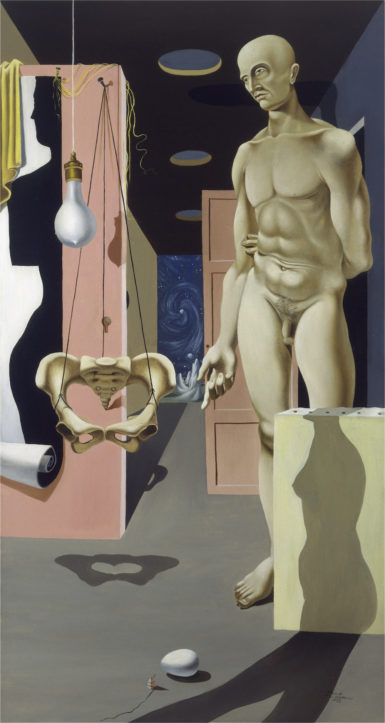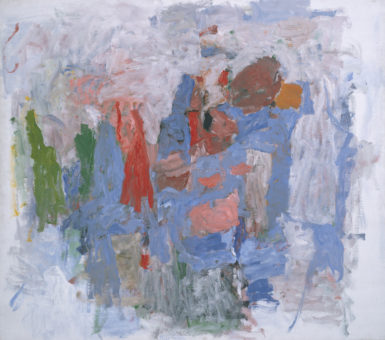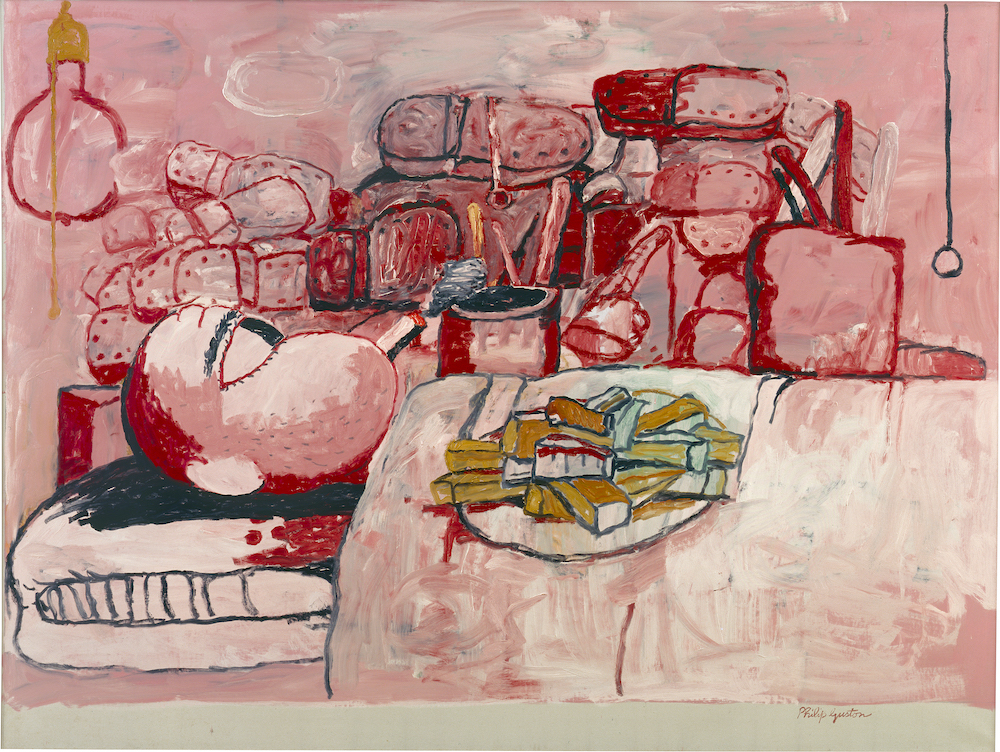[ad_1]

Philip Guston, Painting, Smoking, Eating, 1973.
STEDELIJK MUSEUM/© THE ESTATE OF PHILIP GUSTON
“I was feeling split, schizophrenic,” Philip Guston once famously said, describing his psyche in the 1960s. “The war, what was happening in America, the brutality of the world. What kind of man am I, sitting at home, reading magazines, going into a frustrated fury about everything—and then going into my studio to adjust a red to a blue?”
And so Guston guided his art through a sea change. Spectral, bewitching abstractions gave way to incisive cartoon imagery. It began to teem with piles of legs, ticking clocks, luscious cherries, and not a few strangely endearing Richard Nixons with phallic noses. Now a selection of his life’s work—Nixons included—is coming to the National Gallery of Art in Washington, D.C., a short walk from the White House, for a career-spanning retrospective. It will open on June 7, 2020, as the U.S. presidential election is in full swing.
“Philip Guston Now” will be the first retrospective for the artist—who died in 1980, at the age of 66—in more than 15 years. After closing in September, it will travel to the Museum of Fine Arts in Houston for an opening in October 2020, and then on to Tate Modern in London in February 2021 and the Museum of Fine Arts in Boston in July 2021.

Philip Guston, Nude Philosopher in Space, 1935.
THE MUSEUM OF FINE ARTS, HOUSTON/© THE ESTATE OF PHILIP GUSTON
“We’re going to show his evolution, his progression, over 50 years,” Harry Cooper, the NGA’s modern art chief and a co-curator on the show, told me. “The first work is 1930, and the last work is 1980.” (His fellow curators are Alison de Lima Greene in Houston, Mark Godfrey in London, and Kate Nesin in Boston.)
In all, some 125 paintings and 70 drawings are slated to appear. The earliest piece, made when Guston was a teenager, is the Whitney Museum’s Drawing for Conspirators, a carefully rendered scene of Ku Klux Klansmen (a subject the artist returned to later in life.)
“There’s a whole generation of art lovers and artists who haven’t had the chance to see the work in any depth,” said Musa Mayer, Guston’s daughter and a fervent supporter and scholar of her father’s art.
It is a great time to be a Guston fan—or to become one. Mayer, who runs her father’s estate, is overseeing completion of an online catalogue raisonné of the artist’s paintings, which will be free to the public. Also, two new books are in the works from publisher Laurence King—one providing a concise overview of Guston’s art with a text by Mayer, the other a “major, large, authoritative Guston book,” she said, with Robert Storr penning the central essay.
Also, on September 14, Hauser & Wirth gallery will open “Resilience: Philip Guston in 1971” at its Los Angeles branch, with Nixon drawings and paintings made in Rome, a city that Mayer called “one of his safe havens.” Guston had decamped from New York following a notorious 1970 exhibition at Marlborough gallery in which he officially broke with the reigning orthodoxies of his Abstract-Expressionist peers by introducing a large body of his representational work—and got slammed by some critics as a result.
The forthcoming show at Hauser & Wirth, which has staged four Guston shows since beginning to work with his estate in 2015, should serve as a strong aperitif for the retrospective, which will take that Marlborough show as one of its focal points, marshaling the largest-to-date congregation of works from that storied affair.

Philip Guston, Passage, 1957–58.
THE MUSEUM OF FINE ARTS, HOUSTON/© THE ESTATE OF PHILIP GUSTON
After the show, Guston “wasn’t selling anything,” Cooper said. “But David McKee”—the artist’s New York dealer at the time—“kept giving him shows. Artists went to see the shows, and they talk about him giving them permission to do all kinds of things, to take all kinds of risks, whether in painting ‘badly’ or employing really difficult imagery.”
Teaching to make ends meet and going deeper and deeper into his unflinching figurative style, Guston solidified his reputation as an artist’s artist, a title he retains to this day. (Though, to be sure, he’s now a market star too, with paintings regularly trading for seven figures.) The title of the retrospective, “Philip Guston Now,” is meant to emphasize his continuing sway on artists today.
“He called on them to follow their inner prompts to go deeply into themselves, to not compromise, and to give themselves passionately to this enterprise of painting,” Mayer said of her father’s influence on students and other artists.
Despite its initially frosty reception, Guston’s late work has come to define his legacy—so Cooper said one of the goals for the exhibition is to provide a complete and balanced picture of the artist’s practice, showing how it moved gradually from figuration to abstraction and then back again. “It’s the old sonata form, A–B–A.” Cooper said. “You get to see big patterns emerging—toward color and away from color, prettier paintings and more difficult moments. It’s really epic—the swings, the scope.”
“It’s often true that the art world can only hold a single idea in mind,” Mayer said. As she sees it, Guston’s late work “is only a part of the story.”
[ad_2]
Source link

